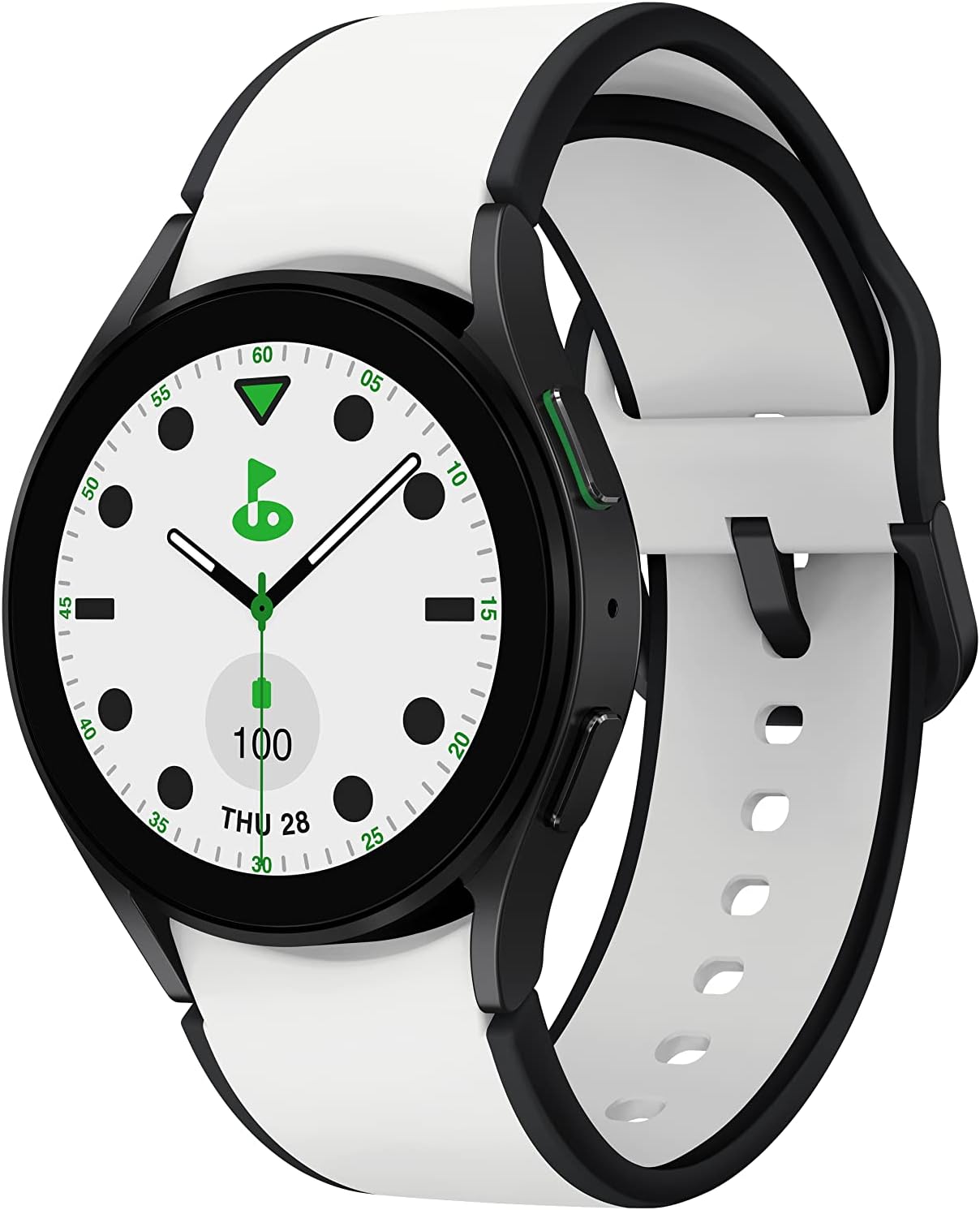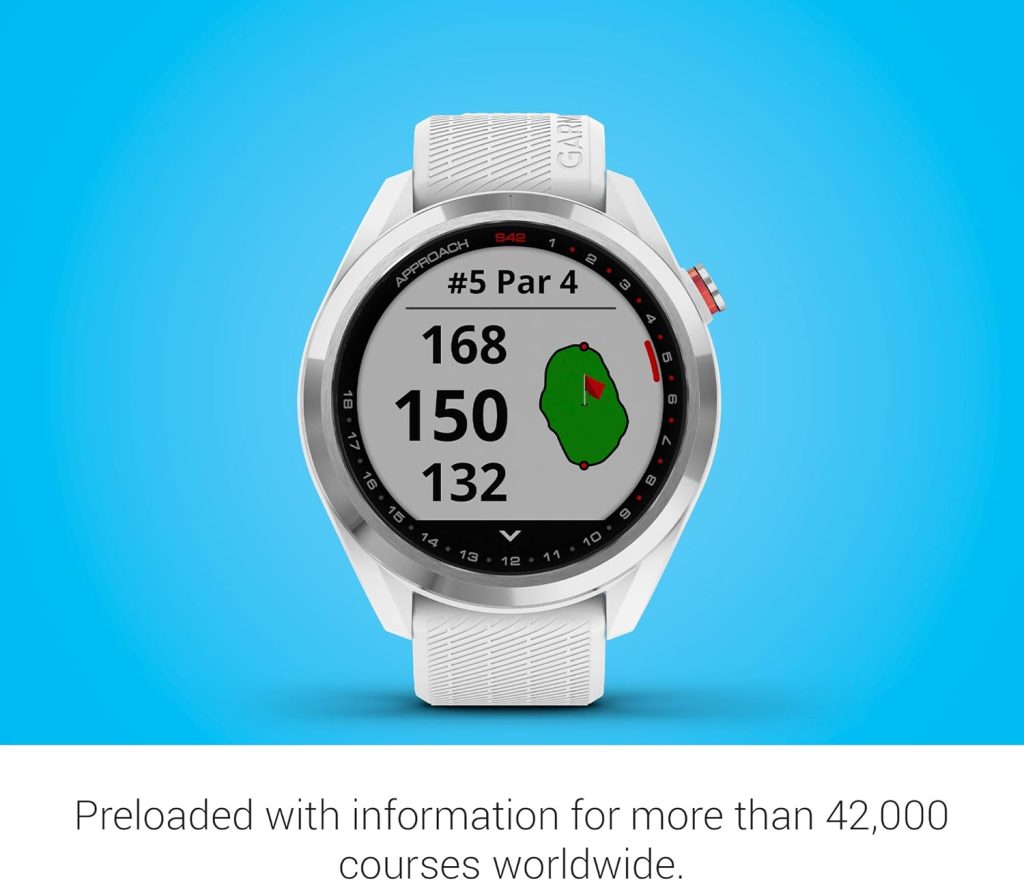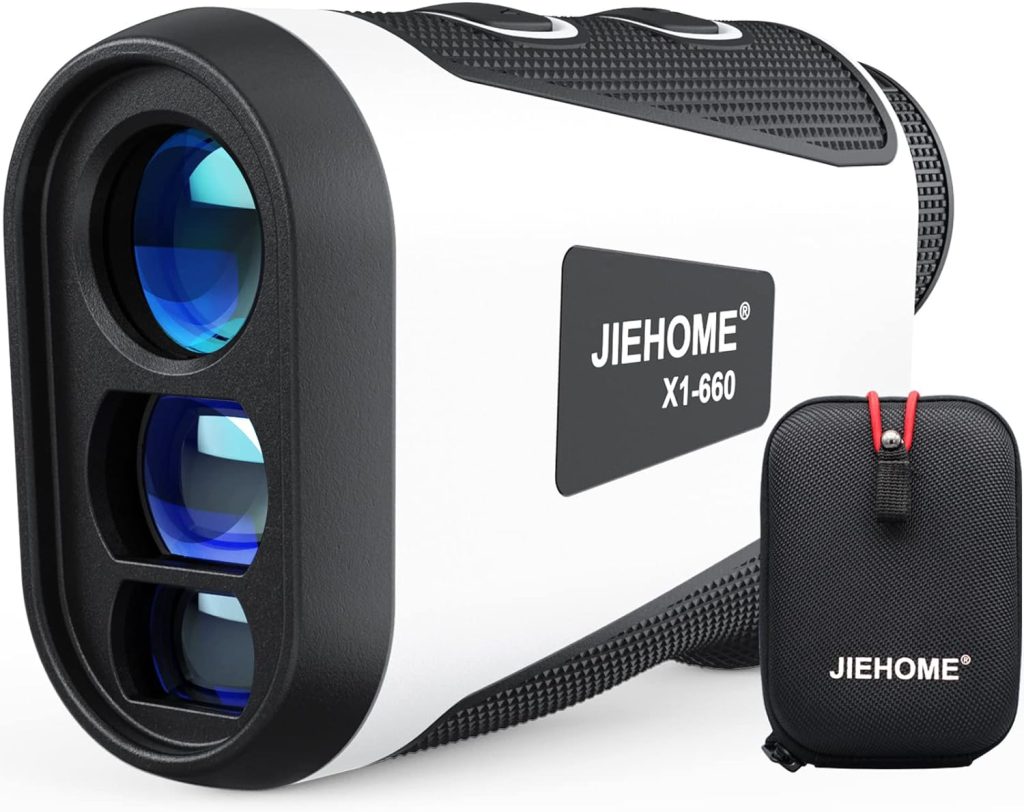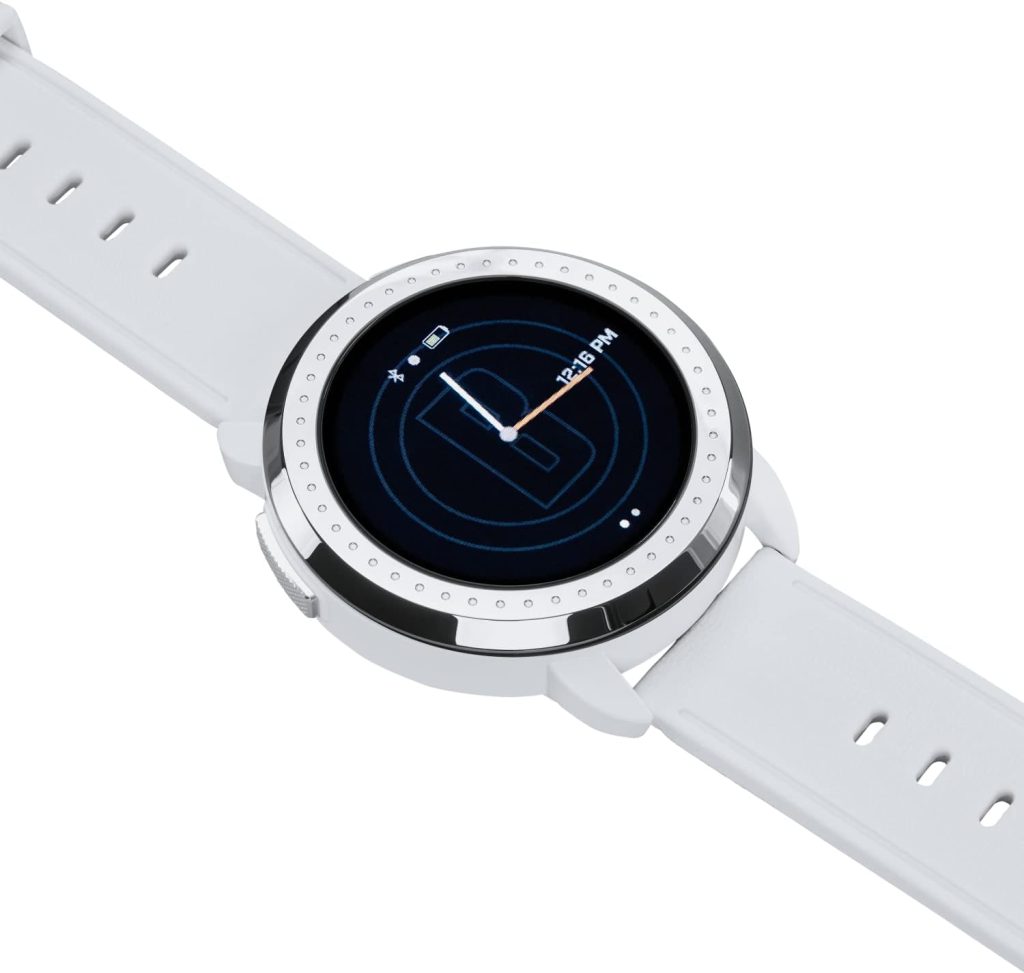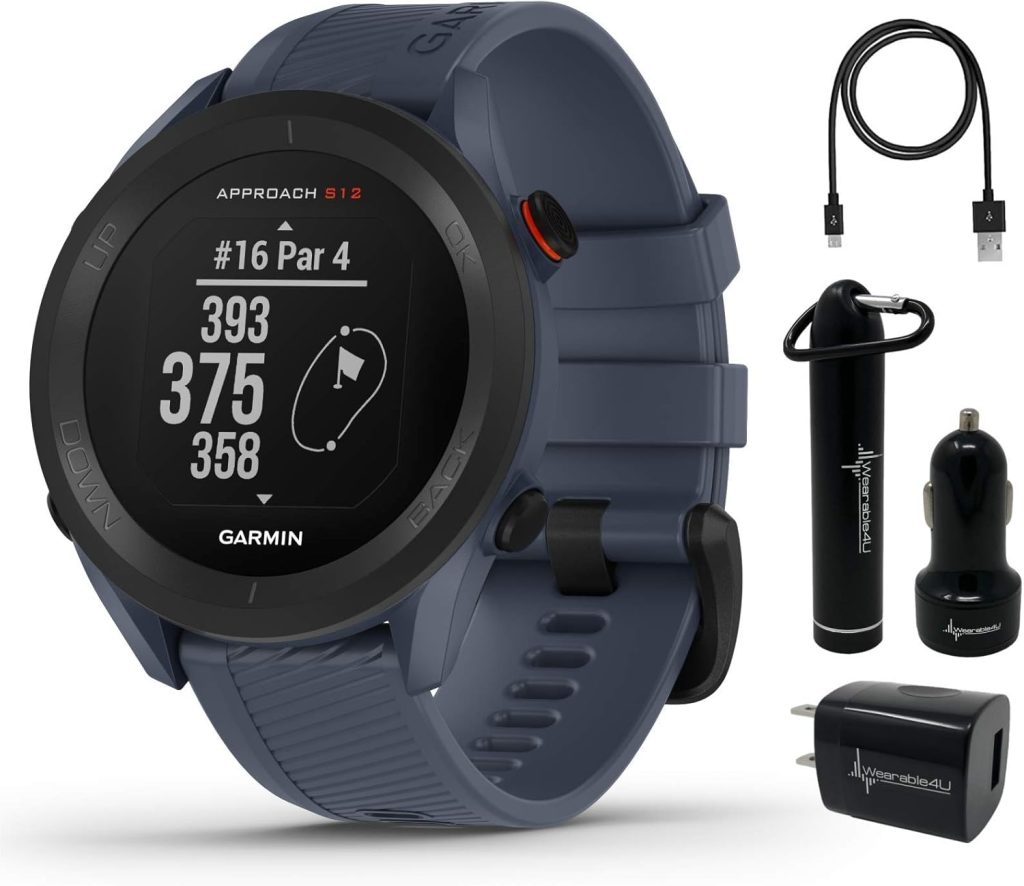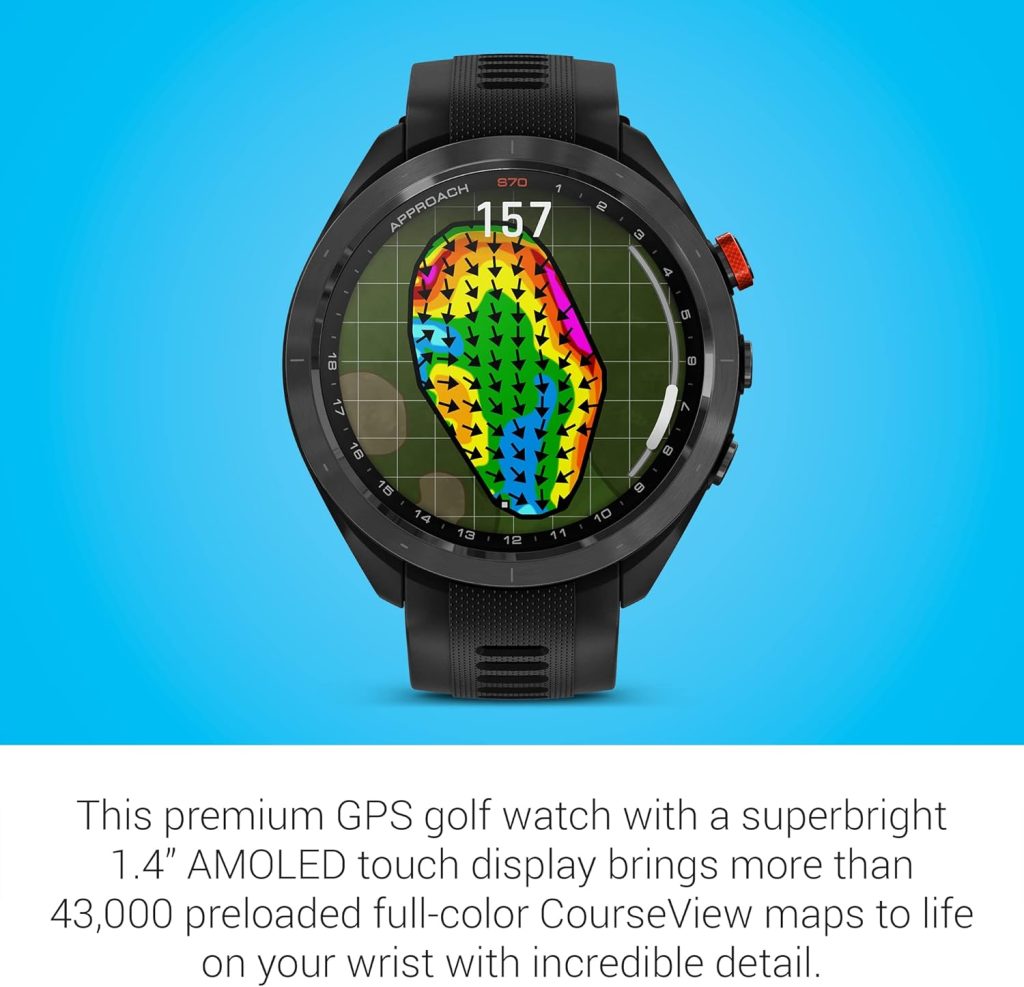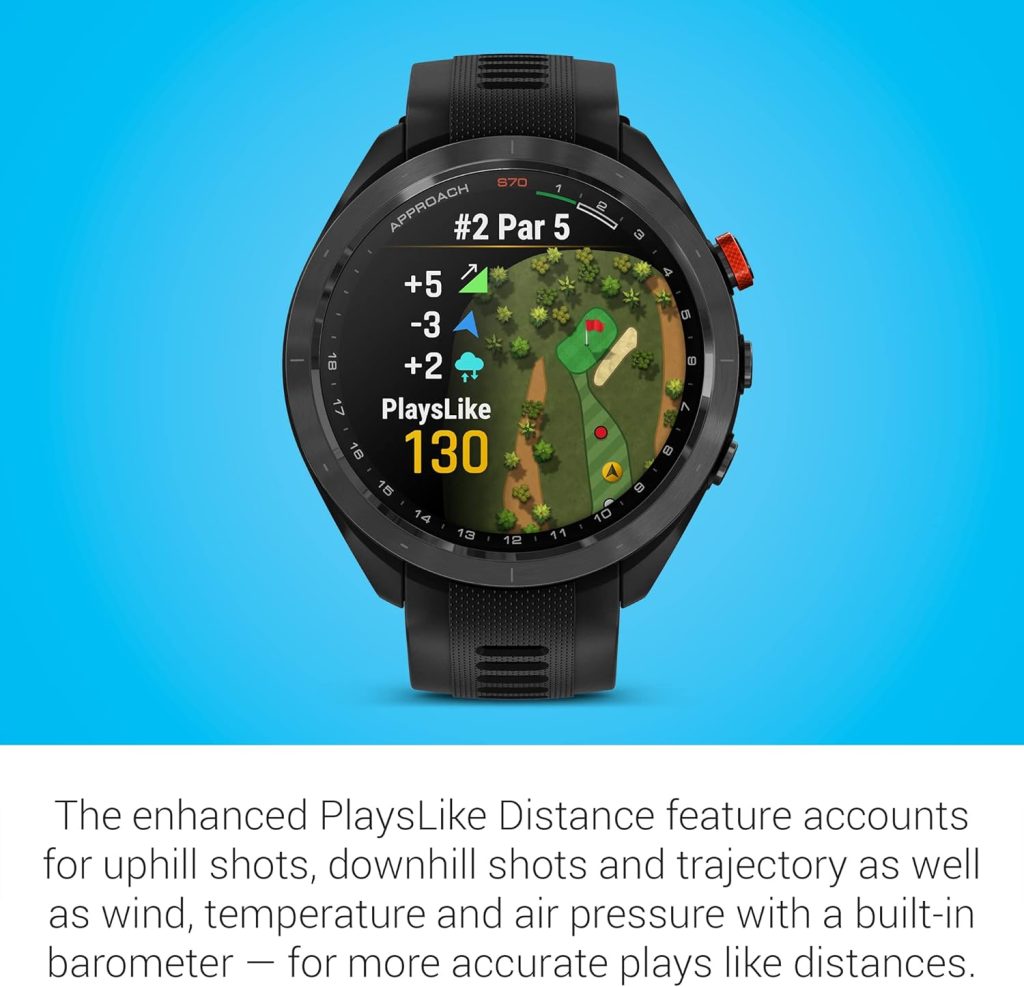Table of Contents
ToggleIntroduction
Golf has always been a game of precision, strategy, and continuous improvement. In recent years, technology has played an increasingly important role in helping golfers enhance their performance on the course. Among the most significant technological advancements in golf are GPS golf watches, which have revolutionized how players approach the game.
What is a GPS golf watch?
A GPS golf watch is a wearable device that uses Global Positioning System technology to provide golfers with accurate distance measurements and other valuable data during their rounds. These compact, wrist-worn devices offer a wealth of information at a glance, including distances to the front, middle, and back of greens, as well as to hazards and layup points. Many models also include additional features such as digital scorecards, shot tracking, and even swing analysis.
Brief history of GPS technology in golf
The integration of GPS technology in golf began in the late 1990s with handheld devices that could provide basic distance measurements. However, these early units were often bulky, had limited battery life, and required manual input of course information. The first GPS golf watches emerged in the mid-2000s, offering a more compact and convenient solution. Since then, the technology has rapidly evolved, with today’s GPS golf watches boasting high-resolution color displays, extensive course databases, and a multitude of advanced features.
Why GPS golf watches have become essential tools for modern golfers
GPS golf watches have gained immense popularity among golfers of all skill levels for several reasons:
- Improved course management: By providing accurate distance information, these watches help golfers make more informed decisions about club selection and shot strategy.
- Increased pace of play: With instant distance readings, players can speed up their decision-making process, contributing to faster rounds.
- Convenience: Unlike laser rangefinders or smartphone apps, GPS watches are always readily accessible on your wrist, requiring no additional effort to use during play.
- Performance tracking: Many GPS golf watches offer the ability to record scores, track stats, and analyze performance over time, helping golfers identify areas for improvement.
- Versatility: Beyond golf-specific features, many of these watches double as fitness trackers and smartwatches, offering value both on and off the course.
As we delve deeper into this guide, we’ll explore the intricacies of GPS golf watch technology, discuss key features to look for, compare different options on the market, and provide tips on how to make the most of these powerful tools. Whether you’re a seasoned pro or a weekend warrior, understanding GPS golf watches can help take your game to the next level.
How GPS Golf Watches Work
Understanding the technology behind GPS golf watches can help you appreciate their capabilities and use them more effectively on the course. Let’s break down the key components and processes that make these devices work.
Basic principles of GPS technology
GPS golf watches rely on the Global Positioning System, a network of satellites orbiting the Earth. Here’s how it works:
- Satellite communication: GPS watches receive signals from multiple satellites in orbit.
- Trilateration: By calculating the time it takes for signals to reach the watch from different satellites, the device can determine its precise location on Earth.
- Continuous updates: The watch constantly recalculates its position, usually several times per second, to provide real-time location data as you move around the golf course.
Golf course mapping and preloaded courses
GPS golf watches come preloaded with detailed maps of thousands of golf courses worldwide. Here’s how this feature works:
- Course database: Manufacturers maintain extensive databases of golf course maps, which are regularly updated.
- Preloaded information: These maps are loaded onto the watch, containing data about hole layouts, green locations, hazards, and other course features.
- Automatic recognition: When you arrive at a golf course, your GPS watch typically recognizes your location and automatically loads the correct course map.
- On-course navigation: As you play, the watch uses its current GPS coordinates in conjunction with the preloaded course map to provide relevant distance information.
Accuracy levels and limitations
While GPS golf watches are highly accurate, it’s important to understand their capabilities and limitations:
- Typical accuracy: Most GPS golf watches are accurate to within 3-5 yards, which is sufficient for most golfers’ needs.
- Factors affecting accuracy:
- Satellite coverage: The number of satellites the watch can connect to can impact accuracy.
- Course updates: The accuracy of distance measurements depends on how recently the course map was updated.
- Obstructions: Dense tree cover or tall buildings near the course can sometimes interfere with GPS signals.
- Comparison to laser rangefinders: While laser rangefinders can provide more precise measurements (often within 1 yard), GPS watches offer the advantage of instant, hands-free distance information to multiple points.
- Continuous improvement: GPS technology is constantly evolving, with newer models offering improved accuracy and faster satellite acquisition.
Understanding these principles can help you use your GPS golf watch more effectively and interpret its data with confidence. In the next section, we’ll explore the key features you can expect to find in modern GPS golf watches, building on this foundational knowledge of how they work.
Key Features of GPS Golf Watches
Modern GPS golf watches come packed with a variety of features designed to enhance your golfing experience. Understanding these features will help you choose the right watch for your needs and make the most of its capabilities on the course.
Distance Measurements
The core function of any GPS golf watch is providing accurate distance information:
- Green distances: Front, middle, and back of the green measurements.
- Hazard distances: Distances to water hazards, bunkers, and other obstacles.
- Layup distances: Information for strategic shot planning on longer holes.
- Doglegs: Distances to the turn on dogleg holes.
Digital Scorecard and Stat Tracking
Many GPS watches offer built-in scoring capabilities:
- Digital scorecard: Allows you to input and save your scores for each hole.
- Stat tracking: Records various performance metrics such as fairways hit, greens in regulation, and putts per round.
- Historical data: Stores your scores and stats over time, allowing you to track your progress.
Course Mapping and Hole View
Visualize the layout of each hole:
- 2D course maps: Overhead view of the hole you’re playing.
- Green view: Detailed view of the green’s shape and size.
- Hazard placement: Visual representation of hazard locations.
- Manual pin placement: Ability to adjust pin location for more accurate approach distances.
Shot Tracking and Measurement
Advanced features for analyzing your game:
- Shot distance measurement: Calculates the distance of each shot.
- Club tracking: Some watches can record which club you used for each shot.
- Stroke detection: Automatically detects when you’ve taken a shot.
Swing Analysis Features
Some high-end GPS golf watches offer swing analysis tools:
- Swing tempo measurement: Analyzes the timing and rhythm of your swing.
- Swing path tracking: Provides information on your swing path and club head speed.
- Integration with sensors: Some watches can connect to additional sensors for more detailed swing data.
Additional Sports Modes and Fitness Tracking
Many GPS golf watches double as general-purpose smartwatches:
- Multi-sport modes: Tracking for other activities like running, cycling, or swimming.
- Step counting: Daily step tracking for general fitness monitoring.
- Heart rate monitoring: Some watches include built-in heart rate sensors.
- Sleep tracking: Monitors sleep patterns and quality.
Smart Features
Integration with your smartphone for added convenience:
- Notifications: Receive calls, texts, and app notifications on your watch.
- Weather updates: Real-time weather information and forecasts.
- Bluetooth connectivity: Sync data with your smartphone or connect to other devices.
H. Battery Life and Power Saving Modes
Crucial for uninterrupted use during long rounds:
- Standard battery life: Typically ranges from 8-12 hours in GPS mode.
- Power saving modes: Options to extend battery life by reducing screen brightness or GPS polling frequency.
- Solar charging: Some advanced models feature solar charging capabilities.
Understanding these features will help you prioritize what’s most important for your golfing needs. In the next section, we’ll discuss the benefits of using a GPS golf watch and how these features can contribute to improving your game.
GPS golf watches offer a range of advantages that can significantly enhance your golfing experience and potentially improve your performance. Let’s explore the key benefits:
Improved Course Management
Informed decision-making: With accurate distance information readily available, you can make better decisions about club selection and shot strategy.
Risk assessment: Knowing precise distances to hazards helps you weigh risks and rewards more effectively.
Layup strategy: Accurate information for layup shots can help you position your ball more strategically, especially on par 5s or challenging par 4s.
Green management: Understanding the depth of the green helps you choose the right club for approach shots, potentially leading to more greens in regulation.
Faster Play and Decision-Making
Reduced time for distance calculation: No need to search for sprinkler heads or markers, speeding up pre-shot routines.
Quick reference: Glance at your wrist for instant information, rather than pulling out a rangefinder or consulting a course book.
Pace of play: Faster decision-making can help maintain a good pace of play, which is beneficial for you and other golfers on the course.
Accurate Distance Measurements Without Additional Devices
Convenience: No need to carry separate rangefinders or consult physical yardage books.
Always accessible: Distance information is always at hand, even when you’re away from your bag.
Multiple reference points: Get distances to various points on the hole simultaneously, not just to your target.
Performance Tracking and Analysis
Identify trends: By recording your scores and stats over time, you can spot patterns in your game.
Pinpoint weaknesses: Detailed stat tracking helps you identify areas of your game that need improvement.
Track progress: Monitor your improvement over time with historical data on scores and key performance indicators.
Data-driven practice: Use the insights gained to focus your practice sessions on areas that need the most work.
Convenience and Ease of Use
Wearable technology: Having the device on your wrist means it’s always readily available and hard to misplace.
User-friendly interfaces: Most GPS golf watches are designed with intuitive controls for ease of use during play.
Auto-hole advancement: Many watches automatically detect when you move to the next hole, requiring minimal input from you.
Waterproof design: Most GPS golf watches are water-resistant or waterproof, making them suitable for play in various weather conditions.
Enhanced Confidence
Reduced uncertainty: Knowing exact distances can boost your confidence in club selection and shot execution.
Consistent information: Reliable distance data on every shot can lead to more consistent decision-making and potentially more consistent play.
Post-Round Analysis
Round review: After your round, you can review your performance data to gain insights into your play.
Long-term improvement: Over time, the data collected can help you and your coach (if you have one) make informed decisions about your game improvement strategy.
Additional Value
Multi-sport functionality: Many GPS golf watches double as fitness trackers or smartwatches, providing value beyond the golf course.
Health monitoring: Features like step counting and heart rate monitoring can contribute to your overall fitness and well-being.
By leveraging these benefits, golfers of all skill levels can enhance their on-course experience and potentially improve their performance. In the next section, we’ll compare GPS golf watches to other distance-measuring devices to help you understand their relative advantages and disadvantages.
GPS Golf Watches vs. Other Distance-Measuring Devices
To fully appreciate the value of GPS golf watches, it’s helpful to compare them with other popular distance-measuring options available to golfers. Let’s examine how GPS watches stack up against laser rangefinders and smartphone apps.
Comparison with Laser Rangefinders
Laser rangefinders are handheld devices that use laser technology to measure the distance to a specific target.
Pros of Laser Rangefinders:
Precision: Generally accurate within 1 yard.
Flexibility: Can measure distance to any visible point.
No course downloads needed: Works on any course without preloaded maps.
Cons of Laser Rangefinders:
Line of sight required: Need a clear view of the target.
Single point measurement: Only measures one point at a time.
Additional device to carry: Not as convenient as a wrist-worn device.
GPS Golf Watch Advantages:
Hands-free operation: No need to take out and aim a device.
Multiple distances at once: Provides front, middle, and back green distances simultaneously.
Hazard information: Offers distances to various course features without direct line of sight.
Comparison with Smartphone Apps
Many golfers use their smartphones with golf GPS apps as an alternative to dedicated devices.
Pros of Smartphone Apps:
Cost-effective: Many apps are free or low-cost.
Large screen: Easier to view detailed hole maps.
Regular updates: Apps can be easily updated with new features and course information.
Cons of Smartphone Apps:
Battery drain: GPS use can quickly deplete your phone’s battery.
Less convenient: Requires taking your phone out frequently.
Potential distractions: Notifications and calls can interrupt your game.
GPS Golf Watch Advantages:
Purpose-built for golf: Designed for easy use during play.
Better battery life: Optimized for long-lasting GPS use.
Weather resistance: Most GPS watches are water-resistant or waterproof.
Pros and Cons of Each Option
GPS Golf Watches:
Pros:
Convenience and ease of use
Comprehensive course information
Additional features like scoring and fitness tracking
Designed for outdoor use in various weather conditions
Cons:
Reliance on preloaded course maps
Generally less precise than laser rangefinders
Higher initial cost compared to smartphone apps
Laser Rangefinders:
Pros:
High precision
Works on any course without preloaded information
No battery-draining GPS required
Cons:
Limited to line-of-sight measurements
No additional course information or features
Requires manual operation for each measurement
Smartphone Apps:
Pros:
Cost-effective
Large, detailed display
Regular software updates
Cons:
Inconvenient to use during play
Drains phone battery quickly
Potential for distractions from calls or notifications
Choosing the Right Option
The best choice depends on your individual needs and preferences:
If convenience and comprehensive course information are your priorities, a GPS golf watch is likely your best option.
If you prioritize pinpoint accuracy and don’t mind manually measuring distances, a laser rangefinder might be preferable.
If you’re on a tight budget and don’t mind using your phone on the course, a smartphone app could be a good starting point.
Many serious golfers use a combination of methods, such as a GPS watch for general information and a laser rangefinder for precise measurements on approach shots.
Understanding these differences will help you make an informed decision about which type of distance-measuring device is best for your game. In the next section, we’ll dive into how to choose the right GPS golf watch based on your specific needs and preferences.
Choosing the Right GPS Golf Watch
With numerous GPS golf watches on the market, selecting the right one can seem daunting. This section will guide you through the key factors to consider, introduce some popular brands and models, and provide tips to help you make the best choice for your needs.
Factors to Consider
Budget
Entry-level: $100-$200
Mid-range: $200-$400
High-end: $400+
Consider long-term value vs. upfront cost
Skill Level
Beginners: May prefer simpler interfaces and basic distance information
Intermediate: Might benefit from more detailed course mapping and scoring features
Advanced: May want advanced analytics, swing tracking, and high precision
Desired Features
Basic: Distance to green (front, middle, back)
Intermediate: Hazard information, digital scorecard, stat tracking
Advanced: Shot tracking, swing analysis, integration with other devices or platforms
Battery Life
Consider how often you play and for how long
Look for watches that can last at least 2-3 rounds on a single charge
Some high-end models offer solar charging for extended battery life
Display Type and Size
Black and white vs. color display
Touchscreen vs. button operation
Screen size and readability in sunlight
Durability and Water Resistance
Look for robust construction and scratch-resistant screens
Water resistance is crucial for playing in various weather conditions
Check the IP rating or water resistance depth
Course Availability
Ensure the watch comes preloaded with courses you frequently play
Check how often the manufacturer updates its course database
Smart Features
If you want the watch to double as a everyday smartwatch, consider models with additional features like notifications, contactless payments, or music storage
Popular Brands and Models
Garmin
Known for: Comprehensive features, large course database
Popular models: Approach S62, Approach S42, Approach S12
Bushnell
Known for: User-friendly interfaces, good value for money
Popular models: Ion Edge, iON Elite
SkyCaddie
Known for: Highly accurate course maps, touchscreen interfaces
Popular models: LX5, SX400
Shot Scope
Known for: Automatic shot tracking, performance analytics
Popular models: V3, G3
Apple Watch
Known for: Versatility, app-based golf features
Requires third-party golf apps
Tips for Making the Best Choice
Read Expert Reviews: Look for detailed reviews from golf technology experts and trusted publications.
Check User Reviews: Real-world experiences from other golfers can provide valuable insights.
Try Before You Buy: If possible, test the watch or see a demo before purchasing.
Consider Future Needs: Think about how your golfing might evolve and choose a watch that can grow with you.
Evaluate Ecosystem: Some brands offer additional sensors or software that integrate with their watches. Consider if you might want to expand your golf tech in the future.
Assess Non-Golf Use: If you plan to wear the watch off the course, consider its everyday functionality and style.
Check Compatibility: Ensure the watch is compatible with your smartphone if you plan to use connected features.
Warranty and Support: Look into the manufacturer’s warranty and customer support reputation.
Updates and Longevity: Consider how long the manufacturer typically supports each model with software updates and new features.
Resale Value: Some brands and models hold their value better than others if you think you might upgrade in the future.
By carefully considering these factors and tips, you can select a GPS golf watch that not only meets your current needs but also provides value for years to come. In the next section, we’ll discuss how to effectively use your GPS golf watch to maximize its benefits on the course.
Using Your GPS Golf Watch Effectively
Once you’ve chosen your GPS golf watch, it’s important to know how to use it effectively to improve your game. This section will guide you through setting up your watch, understanding its features, and using it optimally during your rounds.
Setting up your watch for first use
Initial charging: Fully charge your watch before first use.
Software updates: Check for and install any available updates.
User profile: Set up your user profile with details like age, height, and handicap.
Course download: If required, download course maps for the areas you play in.
Customization: Adjust settings like units of measurement and display preferences.
Understanding different display modes
Time mode: Basic watch functions and time display.
Golf mode: Activated when you start a round, showing course information.
Hole view: Displays current hole information and layout.
Green view: Shows green shape and allows for pin placement adjustment.
Hazard view: Displays distances to various hazards on the hole.
Scoring mode: For inputting and viewing your score and stats.
Interpreting data during play
Distance readings: Understand front, middle, and back green distances.
Layup information: Use layup distances for strategic shot planning.
Hazard distances: Interpret carry and reach distances for hazards.
Shot tracking: If available, learn how to mark shot locations accurately.
Score and stat input: Develop a routine for inputting data after each hole.
D. Best practices for accuracy
GPS acquisition: Allow time for the watch to acquire GPS signal before starting your round.
Regular updates: Keep your watch’s software and course maps up to date.
Pin placement: Adjust pin positions on the green for more accurate approach distances.
Calibration: Some watches allow for manual distance calibration; use this feature when necessary.
Clear line of sight: For best GPS accuracy, avoid obstructions like dense trees or buildings when checking distances.
Etiquette and rules considerations
Pace of play: Use your watch efficiently to maintain good pace of play.
Local rules: Be aware of any local rules regarding the use of distance-measuring devices.
Tournament play: Know the rules for GPS watch usage in competitions you enter.
Proper timing: Check distances and input scores at appropriate times to avoid slowing play.
Respect playing partners: Be mindful of others when using your watch during social rounds.
Maximizing battery life
GPS mode: Only activate golf mode when you’re ready to play.
Brightness settings: Adjust screen brightness to balance visibility and battery conservation.
Power saving features: Familiarize yourself with any power-saving modes your watch offers.
Carry a charger: For multi-round days, consider carrying a portable charger.
Integrating watch data into your game
Pre-shot routine: Incorporate distance checking into your pre-shot routine.
Course management: Use the information to make smarter decisions about club selection and shot strategy.
Stat analysis: Regularly review your stats to identify areas for improvement in your game.
Comparative analysis: Compare your stats and scores across different rounds and courses.
Troubleshooting common issues
GPS signal loss: Know how to reacquire signal if your watch loses connection.
Course recognition: Learn how to manually select a course if auto-recognition fails.
Syncing problems: Understand the process for syncing your watch with your smartphone or computer.
Battery issues: Know how to manage and troubleshoot battery performance problems.
By following these guidelines, you can ensure that you’re using your GPS golf watch to its full potential. Remember, the key to improving your game with a GPS watch is consistent use and integration into your golfing routine. In the next section, we’ll discuss how to maintain and update your GPS golf watch to keep it performing optimally over time.
Maintaining and Updating Your GPS Golf Watch
Proper maintenance and regular updates are key to ensuring your GPS golf watch continues to perform optimally. This section will guide you through the essential steps to keep your device in top condition.
Software updates and course map downloads
Importance of updates:
Bug fixes and performance improvements
New features and enhancements
Updated course information
Checking for updates:
Most watches can check for updates when connected to a smartphone or computer
Some models may require you to manually check through a companion app or website
Update process:
Connect your watch to its charger before starting an update
Follow the manufacturer’s instructions carefully
Avoid interrupting the update process
Course map updates:
Many brands offer regular course map updates
Learn how to download and install new or updated course maps
Consider updating maps for courses you play frequently before each season
Battery care and charging best practices
Optimal charging:
Use the manufacturer-provided charger or a compatible alternative
Avoid extreme temperatures while charging
Don’t leave the watch charging for extended periods beyond full charge
Battery longevity:
Avoid completely draining the battery when possible
For lithium-ion batteries, partial charges are generally better than full discharge cycles
Store the watch at about 50% charge if not using it for an extended period
Power management:
Learn and use power-saving features during long rounds
Adjust screen brightness and GPS polling frequency to balance performance and battery life
Close unnecessary background apps or features when not in use
Cleaning and physical maintenance
Cleaning the watch:
Use a soft, lint-free cloth slightly dampened with water
For tougher dirt, use mild soap, but avoid harsh cleaners
Pay special attention to cleaning sensors and charging contacts
Band maintenance:
For silicone or rubber bands, clean regularly with mild soap and water
For leather bands, wipe with a dry cloth and avoid water exposure
Consider replacing the band if it shows signs of significant wear
Screen protection:
Some watches come with pre-installed screen protectors; replace if damaged
Consider adding a screen protector if your watch doesn’t have one
Water resistance:
Check the water resistance rating of your watch
If you’ve submerged the watch, rinse with fresh water and dry thoroughly
Have the water resistance checked periodically if you frequently expose the watch to water
Troubleshooting common issues
GPS accuracy problems:
Ensure you have a clear view of the sky
Allow sufficient time for GPS acquisition before play
Check for and install any available GPS-related updates
Syncing issues:
Ensure your smartphone’s Bluetooth is on and within range
Check that your watch’s firmware and companion app are up to date
Try restarting both your watch and smartphone
Battery drain:
Check for apps or features that might be consuming excess power
Ensure your watch is updated to the latest firmware
Consider a factory reset if the problem persists
Display issues:
For unresponsive touchscreens, try cleaning the screen or restarting the watch
For display glitches, check for software updates or perform a reset
Inaccurate data:
Ensure your user profile information is correct
Calibrate sensors if your watch offers this option
Verify that you’re using the most up-to-date course maps
When to seek professional help:
If you experience persistent issues after trying troubleshooting steps
For any physical damage to the watch
If you notice any swelling of the battery
By following these maintenance and troubleshooting guidelines, you can ensure that your GPS golf watch remains a reliable tool for years to come. Regular care and updates will not only extend the life of your device but also ensure you’re always benefiting from the latest features and improvements. In the next section, we’ll explore some of the advanced features and future trends in GPS golf watch technology.
As technology continues to evolve, GPS golf watches are becoming increasingly sophisticated. This section explores some of the most advanced features currently available and looks ahead to potential future developments in the field.
Integration with golf analytics platforms
Cloud-based data storage:
Automatic syncing of round data to online platforms
Access to detailed performance analytics and historical trends
Ability to share and compare data with friends or coaches
Advanced performance insights:
AI-powered analysis of playing patterns and tendencies
Personalized recommendations for improvement based on collected data
Integration with video analysis tools for comprehensive swing breakdowns
Virtual caddie features:
Club recommendations based on historical performance data
Strategy suggestions for course management
Real-time advice during play, considering factors like wind and elevation
Artificial intelligence and machine learning in golf watches
Swing analysis:
Advanced sensors for detailed swing metrics (tempo, path, face angle)
Machine learning algorithms to identify swing flaws and suggest corrections
Comparison of your swing to pro golfer models
Predictive analytics:
Forecasting potential scores based on current play and historical data
Suggesting optimal strategies for hole completion
Predicting personal tendencies under pressure situations
Adaptive coaching:
Personalized training programs based on identified weaknesses
Real-time feedback and tips during practice sessions
Progress tracking and dynamic goal setting
Emerging technologies and potential future features
Augmented Reality (AR) displays:
Overlay of course information on real-world view
Visual representation of ideal shot trajectories
AR-assisted putting line visualization
Enhanced sensor technology:
More accurate GPS with centimeter-level precision
Integration with smart golf balls for even more detailed shot tracking
Advanced heart rate and stress monitoring for better performance under pressure
Improved battery technology:
Longer-lasting batteries for extended play without charging
More efficient solar charging capabilities
Fast-charging technologies for quick power-ups between rounds
Seamless ecosystem integration:
Direct communication with smart golf clubs for instant feedback
Integration with smart clothing for more comprehensive biometric data
Connectivity with course management systems for real-time updates on course conditions
Environmental sensors:
Built-in weather stations for hyperlocal weather data
UV index measurements for sun protection reminders
Air quality sensors for health-conscious golfers
Advanced materials:
Flexible displays that contour to the wrist
Self-healing materials for improved durability
Eco-friendly, biodegradable components
Voice-activated features:
Natural language processing for hands-free operation
Voice-activated scoring and shot tracking
Auditory feedback and coaching
Haptic feedback systems:
Subtle vibrations for swing tempo training
Directional haptics for navigation and alignment cues
Pressure-sensitive bands for grip pressure monitoring
Potential impacts on the game of golf
Accessibility:
Making advanced analytics more available to amateur golfers
Potentially narrowing the gap between amateur and professional play
Pace of play:
Faster decision-making with more readily available information
Potential concerns about over-reliance on technology slowing play
Rules and regulations:
Ongoing discussions about which features are allowable in competitive play
Potential for “tournament modes” that restrict certain advanced features
Learning and improvement:
More data-driven approach to golf instruction and self-improvement
Potential shift in how golf skills are developed and refined
Social aspects:
Enhanced connectivity and sharing features changing how golfers interact
Virtual competitions and challenges based on watch-collected data
As GPS golf watch technology continues to advance, it promises to revolutionize how we approach the game. While some of these features are already becoming reality, others remain on the horizon. Golfers can look forward to increasingly personalized, data-driven experiences that have the potential to enhance both performance and enjoyment of the game.
In the next section, we’ll discuss the legal and tournament considerations surrounding the use of GPS golf watches.
As GPS golf watches become increasingly popular and sophisticated, it’s important to understand the rules and regulations governing their use, especially in competitive play. This section will explore the current stance of golf’s governing bodies on distance-measuring devices and provide guidance on using GPS watches in tournaments.
USGA and R&A rules on distance-measuring devices
Current stance:
As of 2019, the USGA and R&A allow the use of distance-measuring devices in their Rules of Golf, unless prohibited by local rule.
This includes GPS watches, laser rangefinders, and smartphone apps.
Rule 4.3a (“Use of Equipment”):
Allows devices that measure distance only.
Prohibits devices that measure other conditions that might affect play (e.g., wind speed, elevation changes).
Information allowed:
Distance and directional information
Sprinkler head measurements
Green maps (subject to scale and size restrictions)
Information not allowed:
Elevation changes
Wind speed and direction
Temperature and humidity
Recommendations for club selection
Using GPS golf watches in tournaments
Check local rules:
While the USGA and R&A allow distance-measuring devices, individual tournaments or courses may prohibit their use.
Always check the specific rules for each event you enter.
Professional tours:
PGA Tour: Allowed distance-measuring devices in practice rounds but not in competitive rounds as of 2021.
European Tour: Similar to PGA Tour, allowed in practice but not in competition.
Other tours may have different rules, always check before play.
Amateur tournaments:
Many amateur events allow GPS watches and other distance-measuring devices.
College and high school golf often follow USGA rules, but may have additional restrictions.
Proper use during allowed play:
Use the device only for distance information.
Avoid slow play – be efficient in checking distances.
Don’t use restricted features, even if your device has them.
Slope-adjusted distance and when it’s allowed
Slope feature explanation:
Some GPS watches and rangefinders can calculate how elevation changes affect shot distance.
This is known as “slope-adjusted” or “plays like” distance.
Rules regarding slope function:
Slope-adjusted distance is not allowed in tournament play under USGA and R&A rules.
Devices with this capability must have the feature turned off during tournaments that follow these rules.
Watches with dual functionality:
Many GPS watches offer a “tournament mode” that disables slope and other non-conforming features.
It’s the player’s responsibility to ensure the correct mode is activated during tournament play.
Practice rounds and casual play:
Slope functions can be valuable learning tools during practice rounds or casual play.
They can help players develop a better understanding of how elevation affects their shots.
Potential rules changes and future considerations
Ongoing review:
Golf’s governing bodies continually review rules regarding technology use.
Future revisions may further clarify or modify rules on GPS and other technologies.
Potential areas of change:
Integration of artificial intelligence and shot recommendations
Use of augmented reality displays
Incorporation of environmental data (e.g., wind, temperature)
Balancing technology and skill:
There’s an ongoing debate about how much technology should be allowed in golf.
Future rules may seek to balance the benefits of technology with the traditional skills of the game.
Best practices for rule compliance
Stay informed:
Regularly check USGA, R&A, and local golf association websites for rules updates.
Read tournament rules carefully before each event.
Understand your device:
Know which features of your GPS watch are allowed in tournament play.
Learn how to enable/disable features as needed.
When in doubt, ask:
If you’re unsure about a feature or rule, consult with tournament officials before play.
It’s better to ask than to risk disqualification.
Etiquette:
Be considerate of other players who may not be using similar technology.
Maintain pace of play when using your GPS watch.
Understanding these legal and tournament considerations will help ensure that you can enjoy the benefits of your GPS golf watch while staying within the rules of the game. As technology continues to evolve, it’s important to stay informed about any changes to these regulations. In the next section, we’ll explore ways to enhance your GPS golf watch experience with compatible accessories and training aids.
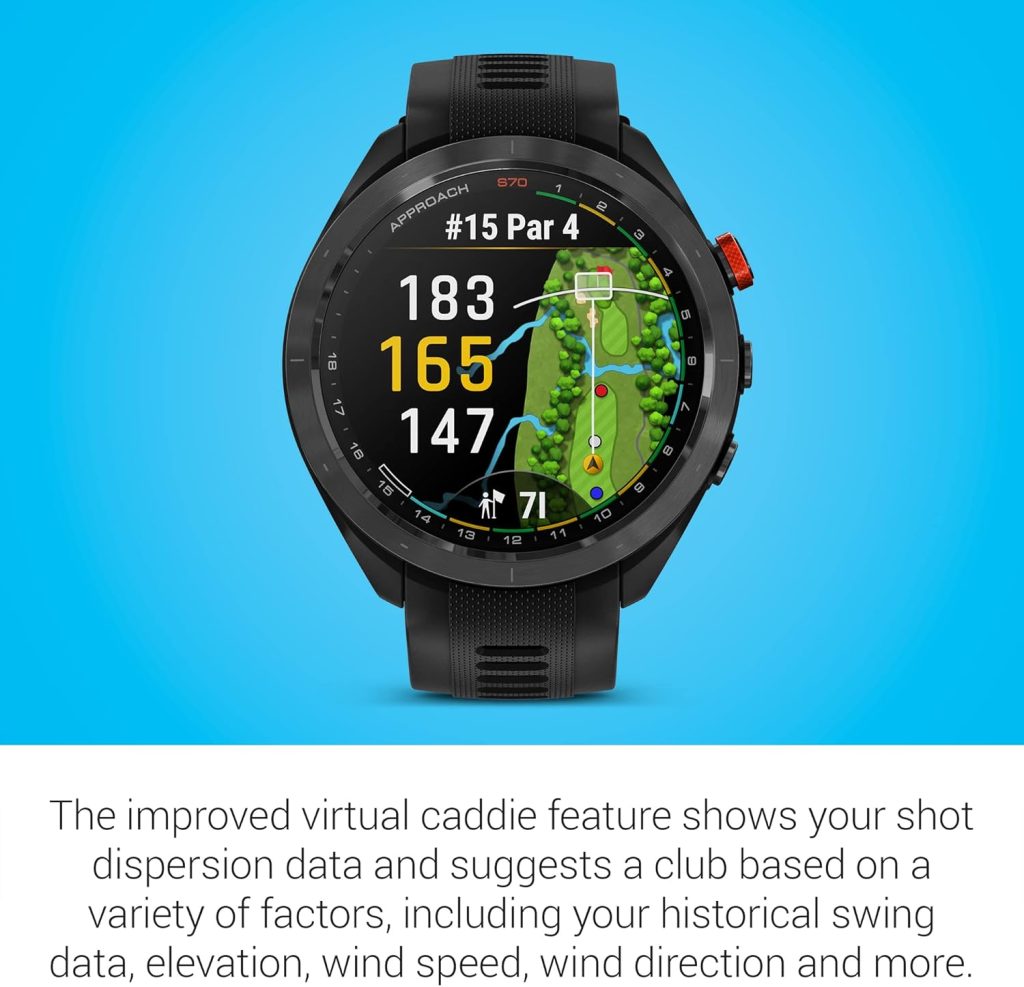
While a GPS golf watch is a powerful tool on its own, there are various accessories and complementary aids that can further enhance its functionality and help improve your game. This section explores these options and how to integrate them into your golfing routine.
Compatible accessories
Screen protectors:
Importance: Protect your watch face from scratches and impacts
Types: Tempered glass, plastic film, liquid screen protectors
Selection tips: Ensure compatibility with your specific watch model
Replacement bands:
Options: Silicone, leather, metal, nylon
Benefits: Improved comfort, style customization, durability for different conditions
Considerations: Water resistance, breathability, ease of cleaning
Portable chargers:
Utility: Extend battery life for multi-round days or golf trips
Features to look for: Compact size, fast charging capability, appropriate connector type
Usage tips: Charge between rounds or during breaks
Clip-on mounts:
Purpose: Attach your watch to a golf bag or cart for easier viewing
Types: Magnetic mounts, clip-on holders
Benefits: Improved visibility, reduced wear on wrist strap
Protective cases:
Function: Additional protection for rugged conditions
Styles: Full coverage, bumper-style, silicone skins
Selection criteria: Balance between protection and ease of access to buttons/touchscreen
Complementary training aids
Launch monitors:
Integration: Many GPS watches can pair with portable launch monitors
Benefits: Detailed swing and ball flight data to complement on-course GPS data
Usage: Practice sessions, club fitting, performance tracking
Smart golf balls:
Technology: Balls with embedded sensors that track flight and spin
Compatibility: Some can sync data with certain GPS watch models
Applications: Putting practice, short game improvement, ball flight analysis
Swing analyzers:
Types: Club-mounted sensors, wearable devices
Data provided: Swing tempo, path, face angle, speed
Integration: Can often sync with GPS watch apps for comprehensive analysis
Pressure plates:
Function: Analyze weight distribution during swing
Benefits: Improve balance, consistency, and power
Data integration: Some systems can sync with GPS watch platforms
Putting training systems:
Features: Alignment aids, stroke analysis, speed control training
Complementary use: Combine with GPS watch data for a complete short game improvement plan
Integrating watch data into your practice routine
Structured practice sessions:
Use GPS watch data to identify areas needing improvement
Set up practice stations based on common distances from your rounds
Simulate on-course scenarios using watch features
Performance tracking:
Regularly sync watch data with companion apps or software
Analyze trends in your performance over time
Set goals based on data insights
Course management practice:
Use the watch’s course mapping features to plan strategies for upcoming rounds
Practice decision-making based on distances and hazard locations
Fitness integration:
Utilize heart rate monitoring (if available) to understand physical exertion during play
Incorporate golf-specific fitness routines guided by watch data
Mental game improvement:
Use shot tracking data to identify patterns in performance under pressure
Practice visualization techniques using course maps and distance information
Maximizing the benefits of your GPS golf watch ecosystem
Regular syncing:
Keep your watch, smartphone app, and any cloud services in sync
Ensure you’re always working with the most up-to-date information
Social features:
Connect with friends or join online communities through your watch’s ecosystem
Participate in challenges or virtual tournaments to stay motivated
Lesson integration:
Share your GPS watch data with your golf instructor
Use the data to focus lessons on specific areas of your game
Custom watchfaces and widgets:
Customize your watch display for at-a-glance access to key golf stats
Set up widgets for quick access to golf-related features
Multi-device strategy:
Consider how your GPS watch can work in tandem with other devices (e.g., smartphone, tablet)
Develop a system that leverages the strengths of each device in your golf tech arsenal
By thoughtfully integrating these accessories and training aids with your GPS golf watch, you can create a comprehensive system for game improvement. Remember that while technology can be a powerful tool, it’s most effective when combined with dedicated practice and on-course experience. In the next section, we’ll conclude our guide with a recap of key points and final thoughts on the role of GPS golf watches in improving your game.
Conclusion
As we wrap up this comprehensive guide to GPS golf watches, let’s recap the key points and reflect on the role these devices can play in enhancing your golf game.
A. Recap of key points
Evolution of GPS golf technology:
From basic distance measurements to comprehensive golf companions
Continuous improvements in accuracy, features, and user experience
Core features of GPS golf watches:
Accurate distance measurements to greens, hazards, and layup points
Course mapping and hole overviews
Score tracking and performance analysis
Additional features like swing analysis and fitness tracking
Benefits of using a GPS golf watch:
Improved course management and decision-making
Faster play and reduced uncertainty
Detailed performance tracking for long-term improvement
Convenience and ease of use compared to other distance-measuring devices
Choosing the right GPS golf watch:
Consider factors like budget, desired features, battery life, and display quality
Balance between golf-specific features and general smartwatch functionality
Importance of trying before buying and reading user reviews
Effective use and maintenance:
Regular software updates and course map downloads
Proper charging and battery care
Integration into your pre-shot routine and overall game strategy
Rules and regulations:
Understanding USGA and R&A stance on distance-measuring devices
Importance of checking local rules for tournaments
Awareness of features that may not be allowed in competitive play
Enhancing the GPS golf watch experience:
Compatible accessories for protection and convenience
Integration with other training aids for comprehensive improvement
Leveraging data for structured practice and performance analysis
The role of GPS golf watches in improving your game
GPS golf watches have evolved from simple distance-measuring tools to comprehensive golf companions. When used effectively, they can play a significant role in improving various aspects of your game:
Strategic improvement:
Better decision-making based on accurate distance information
Enhanced course management skills
Increased confidence in club selection
Performance tracking:
Detailed insights into your playing patterns and tendencies
Identification of strengths and areas for improvement
Data-driven approach to practice and training
Pace and enjoyment:
Faster play with reduced time spent on manual distance calculations
Less stress and uncertainty during rounds
Enhanced overall golfing experience
Long-term development:
Consistent data collection for tracking progress over time
Ability to set and monitor performance goals
Potential for more effective self-coaching and professional instruction
Final thoughts on choosing and using a GPS golf watch
While GPS golf watches offer numerous benefits, it’s important to remember that they are tools to enhance your game, not substitutes for skill and practice. Here are some final considerations:
Personal fit:
Choose a watch that aligns with your specific needs, skill level, and goals
Don’t be swayed by features you’re unlikely to use regularly
Learning curve:
Take the time to fully understand your watch’s capabilities
Gradually integrate its use into your game to avoid over-reliance or distraction
Balance technology with tradition:
Use the watch to inform your decisions, not make them for you
Maintain and develop your course management skills and intuition
Stay updated:
Keep abreast of technological advancements and rule changes
Regularly update your device’s software and course information
Ethical considerations:
Always use your GPS golf watch in compliance with local rules and regulations
Be considerate of playing partners who may not be using similar technology
In conclusion, GPS golf watches represent a significant advancement in golf technology, offering players of all levels the opportunity to enhance their game through accurate information, detailed analysis, and convenience. By choosing the right device, using it effectively, and integrating it thoughtfully into your golfing routine, you can leverage this technology to not only improve your scores but also increase your enjoyment of the game.
Remember, the ultimate goal is to play better golf and have more fun doing it. A GPS golf watch, when used wisely, can be a valuable companion on that journey.
Frequently Asked Questions (FAQ)
Are GPS golf watches worth the investment?
For many golfers, yes. They offer convenience, improved course management, and performance tracking. However, the value depends on how often you play and how you plan to use the features.
How often do I need to update my GPS golf watch?
Software updates should be installed when available, typically every few months. Course maps should be updated before playing a course, especially if you haven’t played there in a while.
Can I use my GPS golf watch for other sports?
Many GPS golf watches double as general fitness trackers and can be used for activities like running, cycling, or swimming. Check the specifications of your specific model.
How accurate are GPS golf watches?
Most modern GPS golf watches are accurate to within 3-5 yards, which is sufficient for most golfers’ needs.
Do I need a subscription to use a GPS golf watch?
Generally, no. Most GPS golf watches work out of the box without a subscription. However, some advanced features or detailed course updates might require a subscription.
Can GPS golf watches measure elevation changes?
Some can, but this feature (often called “Plays Like” distance) is not allowed in tournament play under USGA and R&A rules.
How long do batteries typically last in GPS golf watches?
Battery life varies by model, but most last for at least one full round of golf (4-5 hours in GPS mode). Some can last multiple rounds on a single charge.
Are GPS golf watches waterproof?
Many are water-resistant or waterproof, but the level of protection varies. Check your watch’s IP rating or water resistance depth.
Can I add new golf courses to my GPS watch?
Most GPS golf watches come preloaded with thousands of courses and allow you to download updates. Adding completely new courses usually requires the manufacturer to map them first.
Do professional golfers use GPS watches?
While pros can use GPS devices in practice rounds, they are currently not allowed in most professional tournaments during competitive play.
